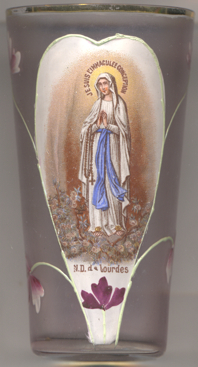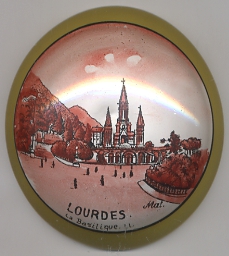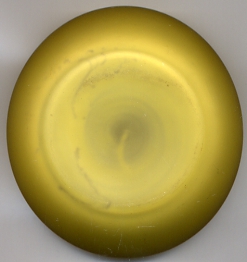

|
| FRANCE | FRANCE |
| région: Occitanie | |
| département: 65, Hautes-Pyrénées |
Lourdes is situated at an elevation of 420 m in the département Hautes-Pyrénées of the région Occitanie of southern France. The municipaity has a population of about 14,700 (2010).
During the 8th century, Lourdes and its fortress became the focus of skirmishes between Mirat, the local leader, and Charlemagne, King of the Franks. Mirat was persuaded to surrender by the local bishop. On the day of his baptism, Mirat took on the name of Lorus, which was given to the town, now known as Lourdes. After being the residency of the Bigorre counts, Lourdes was given to England by the Brétigny Treaty which bought a temporary peace to France during the course of the Hundred Years War with the result that the French lost the town to the English, from 1360. In 1405, Charles VI laid siege to the castle during the course of the Hundred Years War and eventually recaptured the town. Later, during the late 16th century, France was ravaged with the Wars of Religion between the Roman Catholics and the Huguenots. In 1607, Lourdes finally became part of the Kingdom of France.
 On 11 February 1858, a 14-year-old local girl, Bernadette Soubirous, claimed a beautiful lady appeared to her in the remote Grotto of Massabielle. The lady later
identified herself as "the Immaculate Conception" and the faithful believe her to be the Blessed Virgin Mary. The lady appeared 18 times, and by 1859 thousands of
pilgrims were visiting Lourdes. A statue of Our Lady of Lourdes was erected at the site in 1864.
Since the apparitions, Lourdes has become one of the world's leading Catholic Marian shrines and the number of visitors grows each year. It has such an important
place within the Roman Catholic church, that Pope John Paul II visited the shrine twice on 15 August 1983 and 14–15 August 2004. In 2007, Pope Benedict XVI
authorized special indulgences to mark the 150th anniversary of Our Lady of Lourdes.
An estimated 200 million people have visited the shrine since 1860, and the Roman Catholic Church has officially recognised 68 healings considered miraculous.
On 11 February 1858, a 14-year-old local girl, Bernadette Soubirous, claimed a beautiful lady appeared to her in the remote Grotto of Massabielle. The lady later
identified herself as "the Immaculate Conception" and the faithful believe her to be the Blessed Virgin Mary. The lady appeared 18 times, and by 1859 thousands of
pilgrims were visiting Lourdes. A statue of Our Lady of Lourdes was erected at the site in 1864.
Since the apparitions, Lourdes has become one of the world's leading Catholic Marian shrines and the number of visitors grows each year. It has such an important
place within the Roman Catholic church, that Pope John Paul II visited the shrine twice on 15 August 1983 and 14–15 August 2004. In 2007, Pope Benedict XVI
authorized special indulgences to mark the 150th anniversary of Our Lady of Lourdes.
An estimated 200 million people have visited the shrine since 1860, and the Roman Catholic Church has officially recognised 68 healings considered miraculous.
 The
The  Basilica of the Immaculate Conception, known widely as the Upper Basilica and consecrated in 1876, was the second of the
churches to be completed (after the Crypt and before the Rosary Basilica). It is an impressive, elaborate building in Gothic style, designed by architect Hyppolyte Durand,
and on one side seems to emerge directly from the rock of Massabielle (the sanctuary is directly above the Grotto). The exterior is dominated by a 70 m spire, and two
lesser spires (not completed until 1908). Above the entrance is a mosaic depicting Pope Pius IX, who defined the dogma of the Immaculate Conception in 1854.
Basilica of the Immaculate Conception, known widely as the Upper Basilica and consecrated in 1876, was the second of the
churches to be completed (after the Crypt and before the Rosary Basilica). It is an impressive, elaborate building in Gothic style, designed by architect Hyppolyte Durand,
and on one side seems to emerge directly from the rock of Massabielle (the sanctuary is directly above the Grotto). The exterior is dominated by a 70 m spire, and two
lesser spires (not completed until 1908). Above the entrance is a mosaic depicting Pope Pius IX, who defined the dogma of the Immaculate Conception in 1854.
 The
The  Rosary Basilica, in front and below of the Upper Basillica, is the third of the churches to be completed, in 1899 and designed by architect Léopold Hardy.
It was consecrated in 1901 and has a capacity of 1,500 worshippers. Its style is influenced by Byzantine architecture. The nave is open and circular, surmounted by a dome.
The exterior of the dome is surmounted by a dramatic gilded crown and cross, which were a gift from the people of Ireland in 1924. The exterior façade of the basilica was modified
in 2007 to include a depiction of the Luminous Mysteries, which were added to the traditional fifteen by Pope John Paul II in 2002.
Rosary Basilica, in front and below of the Upper Basillica, is the third of the churches to be completed, in 1899 and designed by architect Léopold Hardy.
It was consecrated in 1901 and has a capacity of 1,500 worshippers. Its style is influenced by Byzantine architecture. The nave is open and circular, surmounted by a dome.
The exterior of the dome is surmounted by a dramatic gilded crown and cross, which were a gift from the people of Ireland in 1924. The exterior façade of the basilica was modified
in 2007 to include a depiction of the Luminous Mysteries, which were added to the traditional fifteen by Pope John Paul II in 2002.
The exterior façade of the basilica was modified in 2007 to include a depiction of the Luminous Mysteries, which were added to the traditional fifteen by Pope John Paul II in 2002.
The open space in front of the Rosary Basilica is known as  Rosary Square. The entrances to the Crypt and the Upper Basilica, both of which
are built on top of Massabielle, are far above ground level. To facilitate access, two enormous ramps were constructed, which curve down either side of Rosary Square.
The image of the entrance of the Rosary Basilica, flanked by the two ramps and surmounted by the spires of the Upper Basilica, has become one of the iconic symbols of Lourdes.
Rosary Square. The entrances to the Crypt and the Upper Basilica, both of which
are built on top of Massabielle, are far above ground level. To facilitate access, two enormous ramps were constructed, which curve down either side of Rosary Square.
The image of the entrance of the Rosary Basilica, flanked by the two ramps and surmounted by the spires of the Upper Basilica, has become one of the iconic symbols of Lourdes.
[http://en.wikipedia.org/wiki/Lourdes, http://en.wikipedia.org/wiki/Sanctuary_of_Our_Lady_of_Lourdes]
![[scale]](lineal.jpg)